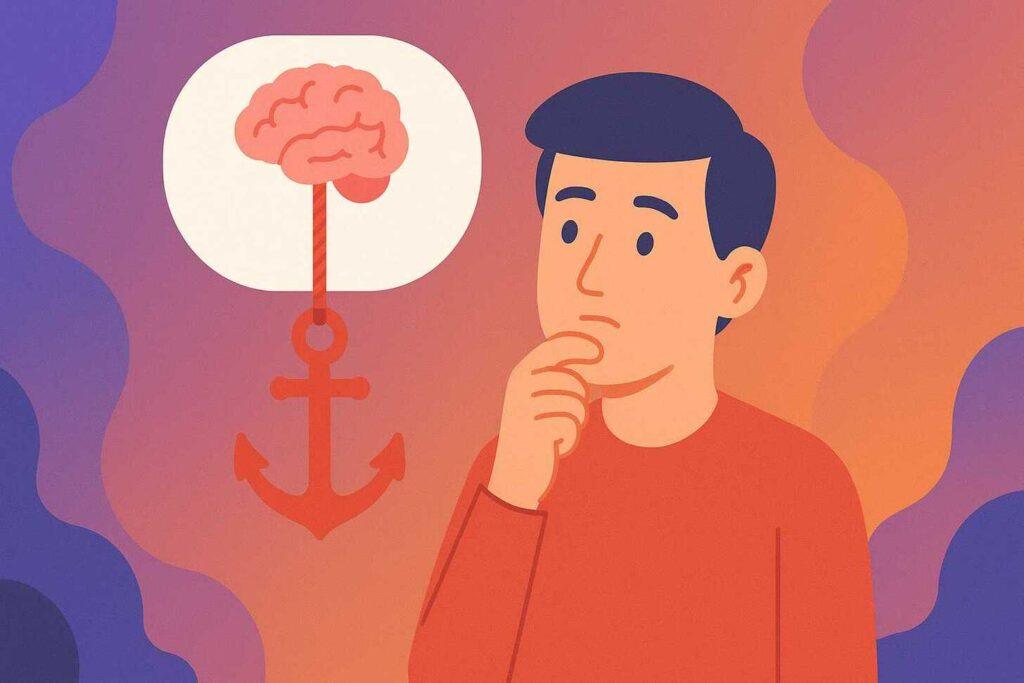Have you ever met someone who sounds like an expert but can’t answer follow-up questions? That’s the chauffeur knowledge mental model in action. It’s when people repeat information without truly understanding it—like a driver reciting a scientist’s lecture word-for-word but lacking the depth to explain it.
Charlie Munger, the legendary investor, popularized this idea using a real story. A physicist named Max Planck once had a chauffeur who memorized his quantum mechanics talk.
The driver delivered the lecture flawlessly in Munich… until a professor asked a technical question. The chauffeur froze. He knew the words but not the meaning.
This mental model warns us about surface-level expertise. It’s easy to confuse polished delivery with real skill. Think about social media influencers or coworkers who talk confidently but crumble under scrutiny. How often do we mistake memorization for mastery?
Key Takeaways
- The chauffeur knowledge mental model: Shows how people mimic expertise without deep understanding
- Charlie Munger highlighted it using Max Planck’s chauffeur story
- Surface knowledge fails when challenged with complex questions
- True expertise requires grasping principles, not just memorizing facts
- This concept helps spot gaps in our own knowledge
In the next sections, we’ll explore how this idea shapes decisions in business, education, and everyday life. You’ll learn to identify the chauffeur knowledge mental model in others—and yourself.
Understanding the Chauffeur Knowledge Mental Model

How many times have you nodded along to a polished presentation only to realize later the speaker couldn’t explain the basics? True expertise isn’t about reciting buzzwords—it’s about grasping principles and understanding the mental models that hold up under pressure.
Like a chef who knows why ingredients react to heat, not just how to follow a recipe. These examples illustrate how mastering these concepts leads to better outcomes in various things.
The Illusion of Competence
Surface-level experts sound convincing until you ask “why?” They might discuss risk assessment models fluently but fail to explain how those models collapsed in 2008. Charlie Munger often warns that words without wisdom are like empty calories—filling but worthless for long-term decisions.
Spotting the Gap
Here’s the test: Can someone simplify complex ideas? A financial advisor who says “diversify your portfolio” without understanding market cycles? That’s a red flag. Studies show biased or shallow thinking leads to 40% more errors in high-stakes choices over five years.
Ask yourself: Does this person create solutions or just repeat them? Real mastery shows when plans adapt to new challenges—not when they crumble at the first tough question.
Origins and Insights from Charlie Munger

What if your taxi driver could explain quantum physics? That’s the exact scenario Charlie Munger used to reveal a critical flaw in how we judge expertise. The billionaire investor—famous for his work at Berkshire Hathaway—brought this idea to mainstream business discussions through a surprising historical example.
The Story Behind the Chauffeur Analogy
In the 1920s, physicist Max Planck’s driver memorized his lectures on quantum theory. After delivering one talk flawlessly in Munich, an audience member asked a technical question. The chauffeur froze. He’d mastered the words but none of the principles behind them.
Munger retold this story to show how easily we confuse repetition with skill. Like hearing a colleague quote statistics without grasping their source, or watching a CEO recite jargon during a meeting. True mastery isn’t about perfect delivery—it’s about answering the “why” behind the facts.
| Aspect | Surface Knowledge | Deep Expertise |
|---|---|---|
| Source | Memorization | Understanding |
| Response to Questions | Falters | Explains |
| Adaptability | Rigid | Flexible |
This analogy became a cornerstone in strategy talks because it exposes a universal bias: we often reward confident speakers over clear thinkers. Next time someone explains a complex idea, ask yourself—are they sharing wisdom or just well-practiced lines?
Key Characteristics and Limitations

Ever watched a weather reporter confidently predict sunshine… during a hurricane? Surface expertise often looks convincing until reality hits. This gap between appearance and ability explains why many smart people make costly mistakes—like bankers trusting flawed risk models before the 2008 crash.
Surface-Level Knowledge Misconceptions
Smooth talkers often get mistaken for experts. A study found 68% of professionals overestimate their understanding of basic industry terms. Think of a chef who knows every cooking show catchphrase but burns toast. Polished language tricks our brains into assuming competence, even when someone’s repeating ideas like a parrot.
Recognizing the Boundaries of Expertise
Warren Buffett’s partner Charlie Munger advocates first principles thinking—breaking ideas down to their core truths. Unlike the chauffeur who memorized physics lectures, true experts rebuild concepts from scratch. Ask: “Can this person explain it to a 10-year-old?” If not, you might be hearing rehearsed lines, not real insight.
History shows the dangers of unrecognized limits. Mortgage experts in 2008 kept saying “housing prices always rise”—a surface-level belief ignoring economic cycles.
Their certainty became their downfall. How often do we cling to half-understood ideas because they sound authoritative?
Here’s the twist: Knowing what you don’t know is a superpower. Like a pilot checking instruments mid-flight, regularly testing your understanding prevents crashes.
Next time someone explains blockchain or AI, ask yourself: Are they sharing wisdom… or just well-practiced lines?
Real-World Applications and Risks

What happens when experts trust shiny spreadsheets over hard truths? The 2008 financial collapse answers this painfully. Banks used complex risk models that looked mathematically flawless. But few understood how these tools actually worked. When housing prices dropped, the entire system crumbled like a sandcastle at high tide.
Lessons from the 2008 Financial Crisis
Wall Street’s reliance on mortgage-backed securities revealed a dangerous pattern. Traders treated risk assessments as gospel without grasping their limits.
A Federal Reserve study found 83% of executives couldn’t explain the principles behind their own safety checks. They knew how to input data—not why certain assumptions mattered.
Take collateralized debt obligations (CDOs). Many bankers described them as “diversified” without understanding the domino effect of defaults. When homeowners stopped paying mortgages, these investments became radioactive. The cost? Over $10 trillion in global wealth vanished.
Implications for Business and Risk Models
Warren Buffett’s team avoids this trap by asking one question: “What’s the simplest explanation?” They focus on first principles—like a house’s actual value versus its loan price. This approach helped them sidestep the 2008 disaster while others drowned in bad decisions.
Consider these contrasts in business thinking:
| Surface Analysis | Deep Expertise |
|---|---|
| Uses pre-built models | Builds custom frameworks |
| Relies on historical data | Tests assumptions in real situations |
| Fears questioning | Seeks challenging feedback |
What risks lurk in your organization when form outweighs function? True expertise isn’t about having all the answers—it’s about knowing which questions matter most.
Research Findings: From Tetlock to Ericsson
Research reveals a shocking truth: true experts outperform pretenders by margins that change lives. Imagine two doctors diagnosing the same symptoms—one relying on memorized checklists, the other understanding disease pathways. Who would you trust?
The 15% Accuracy Advantage
Philip Tetlock’s 20-year study of 284 forecasters uncovered a critical pattern. Experts using first principles thinking predicted events 15% more accurately than those parroting surface-level data. This gap isn’t academic—it’s the difference between avoiding stock crashes and losing retirement savings.
| Factor | Surface Learners | Deep Experts |
|---|---|---|
| Prediction Accuracy | 62% | 77% |
| Learning Method | Memorization | Concept Mapping |
| Adaptability | Struggles with new data | Updates models quickly |
Building Expertise Through Practice
Anders Ericsson’s research shows mastery isn’t about time spent—it’s about how you practice. Deliberate practice—focused skill-building with immediate feedback—creates 3x faster progress than casual repetition. Violinists using this approach reached elite status in 7 years vs. 21 years for average peers.
Your brain physically changes with this method. MRI scans show thickened neural pathways in experts who engage in targeted practice. Like building muscle memory for complex decisions, this biological shift explains why deep learners adapt better to real-world situations.
Here’s the takeaway: True expertise works like a GPS that recalculates when roads close. Surface knowledge? It’s a paper map from 1998. Which one guides your thinking when life throws curveballs?
Integrating the Model into Everyday Decision-Making

How often do you pause to question why you make certain choices? Building better habits starts with simple tools. Imagine having a Swiss Army knife for your thoughts—mental models help slice through confusion in work, relationships, and life.
Chauffeur Knowledge Mental Model in Daily Practice
Start your morning by asking: “What’s the core problem here?” Like planning meals based on nutrition needs instead of cravings. This first principles approach stops surface-level thinking. Keep a pocket notebook to map decisions—circle areas where answers feel shaky.
Try this weekly checklist:
| Quick Fix | Thoughtful Approach |
|---|---|
| Repeating old solutions | Asking “What’s changed?” |
| Trusting gut feelings | Testing assumptions |
| Rushing to act | Building 2-3 options |
Stuck in a work meeting? Ask colleagues: “Walk me through your reasoning.” Their explanations reveal who understands the why versus just the what. Studies show teams using this method cut errors by 33% in six months.
Revisit your “competence map” each quarter. What topics make you nervous? A friend once realized she avoided retirement planning—turns out, she’d memorized terms but lacked real grasp. Now she practices explaining concepts to her teen nephew.
True growth comes from embracing the cost of learning. It’s like mastering guitar chords before writing songs. Small daily steps—15 minutes of reflection—build lasting skills. What decision will you approach differently today?
Avoiding the Pitfalls of Superficial Expertise

How much would you trust a map that skips half the roads? Many people navigate life with incomplete mental models—like using a cartoon drawing of New York to find Broadway.
Survivorship bias tricks us into copying success stories while ignoring hidden failures. Consider the anchoring effect: once we latch onto an idea, our brain clings to it like glue.
Recognizing and Mitigating Cognitive Bias
Three sneaky traps derail clear thinking:
| Bias | Effect | Antidote |
|---|---|---|
| Overconfidence | “I know enough” mindset | Weekly knowledge audits |
| Curse of Knowledge | Assuming others understand | Simplify explanations |
| Confirmation Bias | Seeking agreeable data | Devil’s advocate practice |
Try inversion thinking: Start by asking “What would ruin this plan?” A study found teams using this framework spotted 42% more risks in projects. Checklists work like guardrails—they force us to question assumptions instead of autopiloting through day-to-day choices.
Reality’s map changes constantly. The smartphone revolution upended 80 years of retail habits in a decade. Update your mental models by testing ideas against real-world effects. Ask yourself: “Does this concept hold true when conditions shift?”
True expertise isn’t about being right—it’s about knowing when you’re wrong. How often do you revisit old beliefs with fresh eyes?
Conclusion
True expertise leaves fingerprints you can trace through time. The concept we’ve explored shows why surface-level understanding crumbles under pressure—like using a paper map in a rainstorm. From Charlie Munger’s insights to the 2008 financial case study, real mastery demands digging below catchy words to grasp root principles.
Research proves this matters. Experts using deep framework thinking outperform others by wide margins—whether predicting markets or mastering skills. But here’s the twist: recognizing gaps in your knowledge is the first step toward growth. What areas of your life rely on memorized answers instead of true comprehension?
Build your latticework of understanding brick by brick. Like a gardener tending plants, nurture curiosity through questions. Wisdom blooms when we replace “I know” with “Let me explore.” After all, the best decisions aren’t made in certainty—they’re forged through humble, ongoing learning.
What will you do differently tomorrow? Start small. Test one assumption. Explain one idea to a friend. Every step toward depth strengthens your life’s foundation. That’s how temporary knowledge becomes lasting wisdom.


